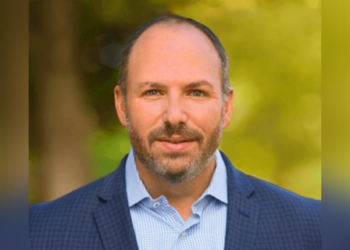It’s always a lot of fun to talk to insurance claims professionals who have experienced a claim themselves and have them speak honestly about their experience. Did they experience any delays, and if so, what were they? What friction did they encounter in the process? Where do they see an opportunity for improvement?
Everyone I have spoken with has several suggestions on how to improve things. Let’s review several standard processes that have been improved and those that can be further enhanced through technology.
Insureds came home to find water running out of the garage. They immediately get on their insurance app, file a claim and upload some pictures. The adjuster reviews the information and decides that a water damage origin and cause are needed. A forensic engineer is dispatched to the home.
The forensic engineer meets with the homeowner, obtains a statement of the sequence of events and proceeds to investigate the garage. They find sprinkler system piping, hot water heaters, a water softener, washer/dryer and HVAC piping all within a localized area. They determine that a fitting for the water softener piping has fractured, and so when the system regenerates, it releases about 60 gallons of water into the garage. They found out the water softener was only installed three weeks earlier in talking with the homeowners. They issue a report, and the carrier uses it to put the plumber on notice for subrogation. The engineer spent about four hours on-site, two hours researching, and two hours writing the report, along with ancillary fees, for a total cost of about $2,500.
A technology company arrives and has a few cameras installed in the home and one as part of their doorbell. Now the homeowners can see who approaches their front door and leaves packages there. If large packages arrive, they can remotely open the garage door to allow the delivery driver to place them inside the garage and then close the garage door.
They can monitor the delivery through the camera installed in the garage. The same claim happens again, but instead, the carrier delivers the garage camera footage to the plumber’s insurance carrier to show the exact moment of the loss. The insureds win because this is one less person they have to deal with letting come into their home, talk to them, and spend the time investigating. The carrier wins because the insured has fewer touchpoints but still has complete claim reimbursement.
An insured gets into a collision on the way to work that renders the vehicle undrivable. A tow truck is dispatched to tow the car to a lot. Then a secondary tow is arranged to take the car to a salvage facility. The lot charges storage fees by the day, so the longer a car sits, the more money they make. The salvage vendor has historically managed the entire paperwork process for the total loss claim. They obtain the loan payoff information and a letter of guarantee and manage the title transfer process.
Typically, loan payoff and the letter of guarantee are obtained within five to seven business days, which means the salvage company has to store the vehicle for that time, and if it includes a weekend or two, it could mean 7-12 days. There is a strong incentive for salvage companies to speed up this process because the faster they can turn their salvaged vehicles, the higher price they can command.
A technology company comes along that has automated the loan payoff process and provides a letter of guarantee on the same day. For the insured, this means they get paid for their car in less than five days, when historically, it may have taken 20 days or more. For the carrier, they close the claim file faster and save money. In this case, the only “losers” are the storage lot and the rental car companies.
However, the forensic engineers, storage lots and rental car companies are not “losers” in this scenario; they have simply failed to improve their processes. As a vendor, there are only three things that matter to your client: Better, faster, cheaper. If you are not vigorously looking at ways to improve through one or all three of those particular avenues, you risk being disrupted. Blockbuster and Netflix are textbook examples of these situations. So, what can insurance vendors do?
The engineer can partner with technology companies that provide this equipment and help carriers to understand the benefits of leveraging the technology. There will be some instances where the information provided by the technology will be incomplete and will require those gaps to be filled by the forensic engineer. The forensic engineer can also review the big data sets with the carrier and identify future improvements to the technology, allowing for ongoing consulting engagements by the engineer (or even a team of engineers).
The salvage vendor can partner with the local towing companies to remove the need for the primary lot and educate the tow truck drivers on how to file an electronic first notice of loss for the insurers with good photos of the damaged vehicle. Then they can use an AI algorithm to determine whether the vehicle will be repairable or not. This eliminates the secondary tow and some of the occasional outrageous fees the primary storage facility charges.
Many process improvement opportunities are well-known throughout the industry. The next level of cost containment and claim cycle time improvement will come from reviewing all vendor processes, identifying those areas that can be done faster, better or cheaper, and then figuring out solutions to accomplish just that.
Timothy D. Christ is a well-known thought leader and speaker in the insurance industry, with over 20 years of experience in forensic engineering and claims investigations, including two published books. Much of his consulting work centers around the future of claims and the impacts of technology. He can be reached at [email protected].
AI: Insurance, business and liability considerations









